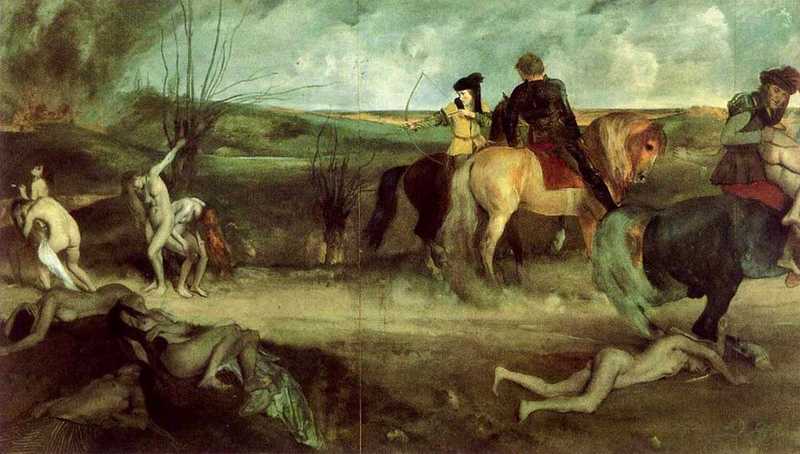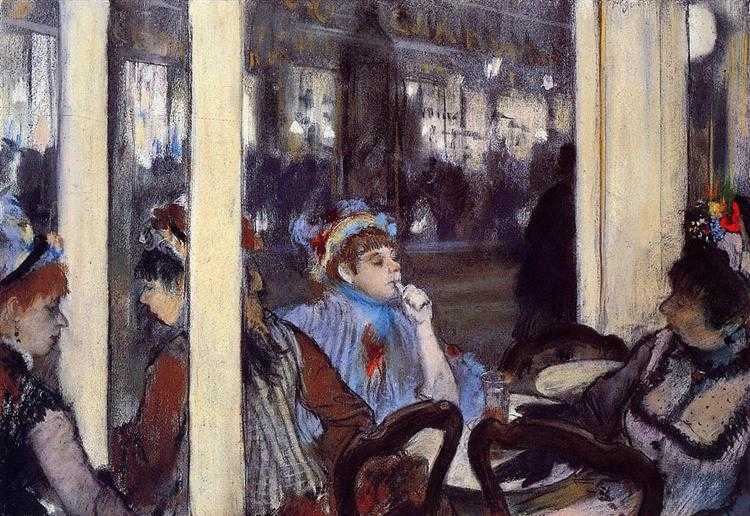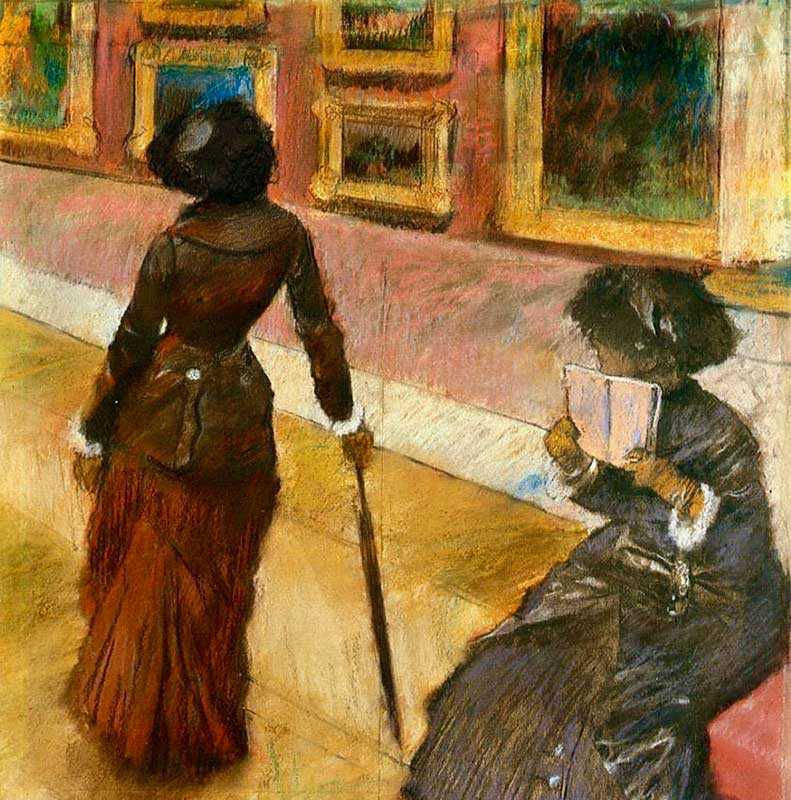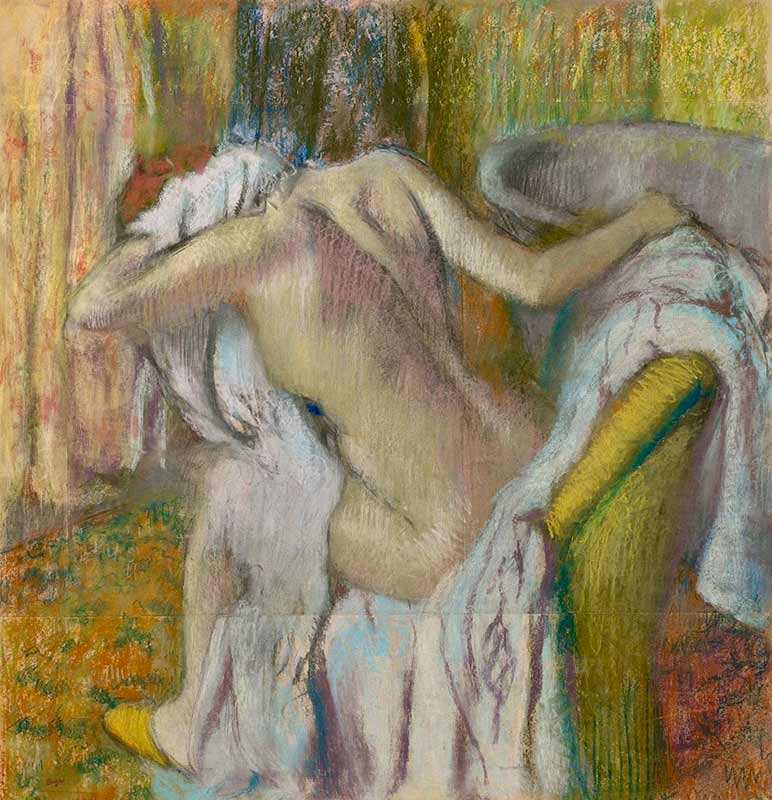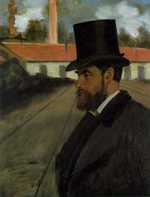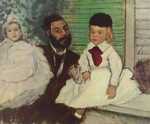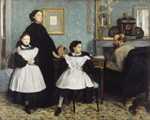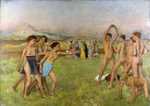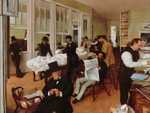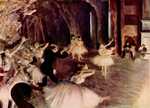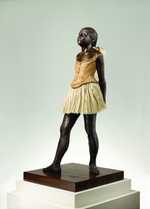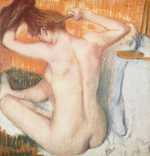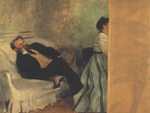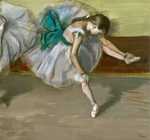1. Early Life
1834: Edgar Degas is born on the 19th of July at Rue Saint Georges in Paris, the eldest of five siblings. His parents are Augustin and Celestine Musson de Gas. His father is a rich banker and his mother is an American woman from New Orleans. Later in his life, Edgar changes his surname back to Degas, the original spelling from which his family had deviated to sound more aristocratic.
1853: Degas graduates with a baccalaureate in literature in 1853. Afterward, at the age of 18, he gets accepted as a copyist at the Louvre, copying works of old masters as well as contemporary ones such as Delacroix and Ingres and even converting a room in his house into an art studio. He has a brief stint in law school but he soon realizes his true passion lies in the arts.
1855: Degas is accepted at the École des Beaux-Arts and there he stays for a year. He was under the tutelage of Louis Lamothe, who himself was a student of Jean-Auguste-Dominique Ingres, an artist Degas was heavily inspired by.
Interesting Fact:
Jean Ingres was a major influencing factor on Degas’ style in his early years. He is known to have remarked, "Draw lines, young man, draw lines," a piece of advice that Degas applied in his early works.
2. Early Years as an Artist
1856: Degas travels to Italy to study and paint. He stays with his aunt’s family, the Belleli family. While he is there, he studies and copies the masterpieces of great artists of the Renaissance era such as Da Vinci, Titian, and Michelangelo. His painting, The Belleli Family (completed in 1859), is a product of his time spent in Italy. This period of his life developed and polished his skills which would later have a great impact on his style.
1859: Degas goes for the traditional route designated for all artists upon his return to Paris; he paints big family portraits and famous historical moments such as "Scene of War in the Middle Ages," “The Daughter of Jephthah,” and "Semiramis Building Babylon." He submits these works to the Salon, the central art authority at the time, but does not receive the recognition that he seeks.
3. The 1860s
He first takes an interest in horse drawings when he visits Paul Valpinçon, his childhood friend in Normandy.
Some of his well-known paintings on the concept of horse racing and jockeys include Gentleman's Race: Before the Start(1862), Horses in Front of the Stands(1866-68), and A Carriage at the Races(1869-72).
1860: A diligent worker, he produces over 700 copies of works of the masters. Spartan Girls Challenging Boys is completed this year, painted in a friezelike style, a testament to his classical education.
1862: Degas meets Manet, the avant-garde artist creating a stir in Parisian society with a style that goes against all the rules stated by the Salon. Coming from a similar social standing, they become fast friends and friendly rivals, often painting together and meeting up with the rest of the Impressionist gang at the Cafe Guerbois to discuss art and how they could use it to impact society.
1868: Degas is a prominent member of the impressionists by now and is close friends with many of them, including Manet, Pierre-Auguste Renoir, Alfred Sisley, and Claude Monet.
1865: Degas’s first submission to the Salon, the Suffering, receives little attention since Manet’s Olympia secures the limelight. Degas submits artworks regularly to the Salon for the next five years but holds his hand on the historical paintings. Manet’s influence on his style has begun to show itself.
1869: Degas completes The Bellelli Family, which spanned over a period of 11 years, from 1858 to 1869. It is currently displayed in the Musee d’Orsay.
The 1870s: Degas has a marked shift from painting traditional scenes to contemporary scenes - moments captured from real life. This is the era that he focuses on painting urban scenes such as dancing ballerinas, racing jockeys, and singers in cafes.
1870/1: Franco-Prussian war breaks out in late 1870 and Degas does not shy away from his duty and volunteers for infantry service. This is also something he has in common with Manet, who held the front lines during the fighting. Other impressionists did not participate: Monet left for London with his family and Cezanne hid in L’Estaque, a village close to Aix-en-Provence. Bazille was the only one to lose his life in the fighting. During training, Degas discovers he has a serious eye condition that would eventually lead to blindness later in life.
1872: To avoid the chaotic aftermath of the war, Degas leaves Paris and travels to New Orleans to live with his uncle Michel Musson, who operates a cotton factory. While he’s away he paints many incredible works focused on recreating moments from daily life such as A Cotton Office in New Orleans (the only work of his that was purchased in his lifetime). He returns to Paris in February 1873.
4. Degas and The Impressionist Exhibitions
Degas was a central part of the impressionist movement and participated in seven of the eight impressionist exhibitions (held from 1874 to 1886) and often had a leading role in the organization, despite his differences with the rest of the group.
His artistic expression was true to the impressionism’s style of capturing fleeting moments from everyday life but he did not think of himself as an impressionist; He detested the label and preferred to call himself a realist. The main reason for this was his opposition to the idea of Plein-Air painting; Degas preferred more planning and structure in his work as opposed to the spontaneity and quick strokes of impressionists.
1873:The impressionist group has gotten fed up with having their works constantly rejected and ridiculed by the salon and they make plans to host their own independent art exhibition: The Société Anonyme Coopérative des Artistes, Peintres, Sculpteurs, Graveurs (the Anonymous Society of Artists, Painters, Sculptors, and Engravers) comes into being.
1874: Degas’ father, who has been his financial support since he left home, passes away, and Degas learns of the immense debt his brother René has accumulated. To take the situation under control, Degas sells the family home and an art collection that he has inherited. He is struck with the realization that he is on his own and to survive he would need to earn a living for the first time in his life. This financial insecurity propels him to join forces with the rest of the impressionists.
On April 15th, they hold the first Impressionist exhibition, and the term “Impressionist” is first coined after a Monet painting called “Impressionism: Sunrise” displayed in this event. Degas exhibits 10 paintings, mostly modern portraits of laundresses and ballet dancers in radical poses, such as A Carriage at the Races and Rehearsal of a Ballet on Stage. The reviews are bitter and acrid, but Degas is still better off than others, such as Monet and Cezanne. "The Dance Class" by Degas presented in the first exhibition is now a famous painting
1876: He exhibited 24 works at the second exhibition in 1876, including The Cotton Exchange at New Orleans and Absinthe.
1877: Degas displays 25 artworks at the third exhibition the next year. Dancers Practicing at the Bar is a famous one from that year.
1879: Mlle La La at the Circus Fernando and Spartan Girls Challenging Boys is presented in the fifth impressionist exhibition. The latter one is currently homed in London’s National Gallery.
5. Final Years Of Degas Life
Degas’ final years were marked by self-imposed isolation (he believed an artist's fate was to live a solitary life) and increasing blindness that made him irritable.
With the emergence of his anti-semitic views, he lost many friends, further contributing to his loneliness. He experimented in his artistic career, and he delved into photography in the late 1880s, including portraits that acted as a reference for his paintings. His artistic expression also evolved to include pastels and sculpture-making.
1881: At the 6th exhibition he debuts an evocative sculpture, "The Little Fourteen-Year-Old Dancer," his first and only sculpture to be shown in public. While some critics marvel at it, others have harsh words to say about it.
1886: At the Eighth and last exhibition Degas presents nude paintings of women in different poses while taking a bath. While the collection caused quite a stir, the reviews are mixed.
1894: The Dreyfus Affair creates a divide in French society. Degas is decidedly anti-semitic even when there is evidence pointing to Dreyfus’ innocence. This alienates him from the more tolerant artistic circles and dissolves many friendships, the loss of which he regrets later in his life
Interesting Fact:
A modern perspective on Degas is that he was a misogynist, and the evidence supporting these claims comes from Degas’ own sayings. He referred to ballet dancers as his “little monkey girls,” and “They're like performing animals, they're like animals in the zoo." He also said that “I have perhaps too often considered a woman as an animal.”
1912: Degas is forced to leave his studio of 20 years in Montmartre, which marks the end of his artistic career.
1917: Degas dies in Paris on September 27, 1917. He was 83 years old and outlived many of his old friends.
6. His Legacy
1918: His private art collection, discovered after his death, goes on auction at the start of the first world war during the bombardment of Paris. His collection contains works by the old masters such as Daumier, Delacroix, and Ingres along with those of Degas’ contemporaries: Manet, Cassatt, Cezanne, Pissarro, Gauguin, and Van Gogh.
1999: Danseuse au Repos, painted around 1879 sells for a jaw-dropping £17.6 million ($27.9 million), getting the records of the most expensive Degas painting to date.

